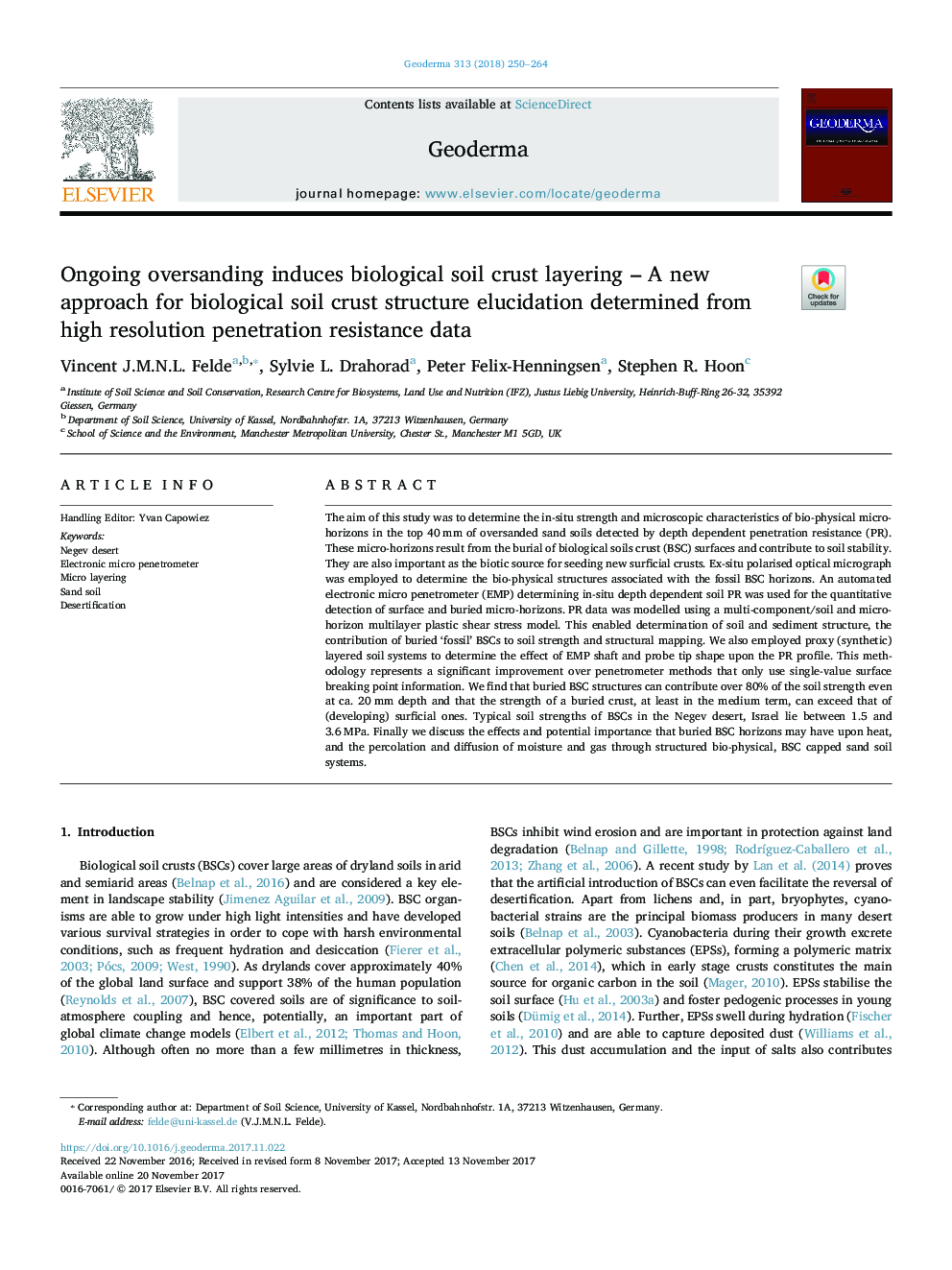| Article ID | Journal | Published Year | Pages | File Type |
|---|---|---|---|---|
| 8894361 | Geoderma | 2018 | 15 Pages |
Abstract
The aim of this study was to determine the in-situ strength and microscopic characteristics of bio-physical micro-horizons in the top 40Â mm of oversanded sand soils detected by depth dependent penetration resistance (PR). These micro-horizons result from the burial of biological soils crust (BSC) surfaces and contribute to soil stability. They are also important as the biotic source for seeding new surficial crusts. Ex-situ polarised optical micrograph was employed to determine the bio-physical structures associated with the fossil BSC horizons. An automated electronic micro penetrometer (EMP) determining in-situ depth dependent soil PR was used for the quantitative detection of surface and buried micro-horizons. PR data was modelled using a multi-component/soil and micro-horizon multilayer plastic shear stress model. This enabled determination of soil and sediment structure, the contribution of buried 'fossil' BSCs to soil strength and structural mapping. We also employed proxy (synthetic) layered soil systems to determine the effect of EMP shaft and probe tip shape upon the PR profile. This methodology represents a significant improvement over penetrometer methods that only use single-value surface breaking point information. We find that buried BSC structures can contribute over 80% of the soil strength even at ca. 20Â mm depth and that the strength of a buried crust, at least in the medium term, can exceed that of (developing) surficial ones. Typical soil strengths of BSCs in the Negev desert, Israel lie between 1.5 and 3.6Â MPa. Finally we discuss the effects and potential importance that buried BSC horizons may have upon heat, and the percolation and diffusion of moisture and gas through structured bio-physical, BSC capped sand soil systems.
Keywords
Related Topics
Physical Sciences and Engineering
Earth and Planetary Sciences
Earth-Surface Processes
Authors
Vincent J.M.N.L. Felde, Sylvie L. Drahorad, Peter Felix-Henningsen, Stephen R. Hoon,
